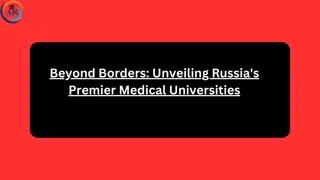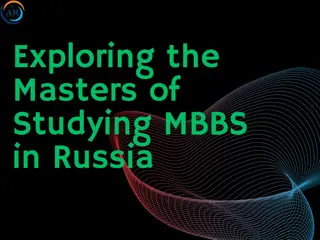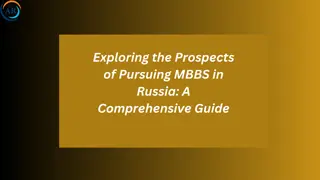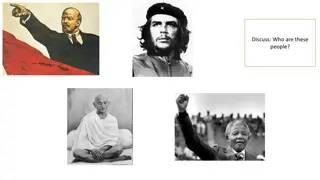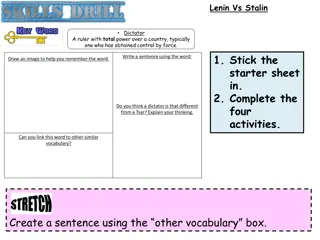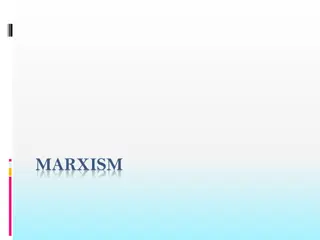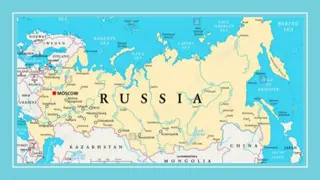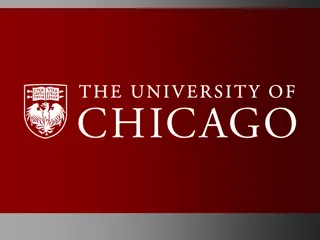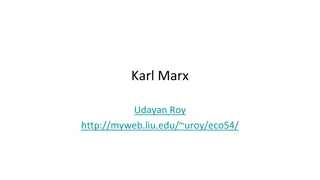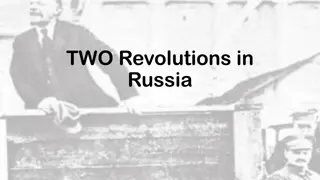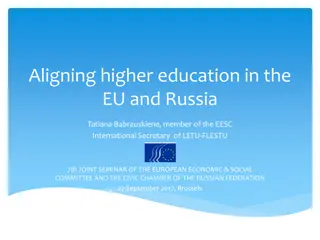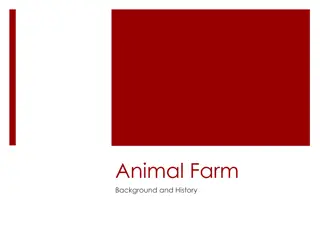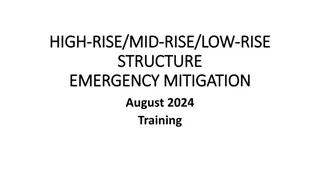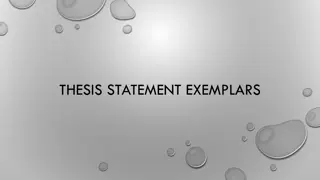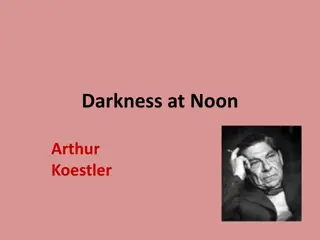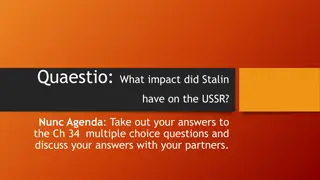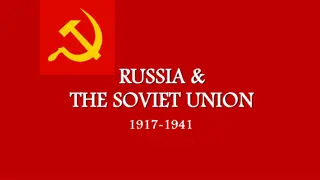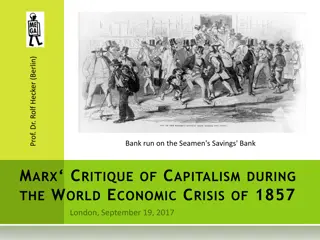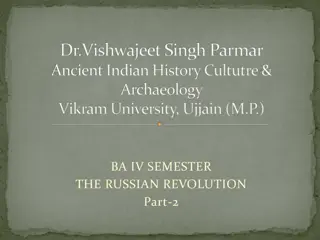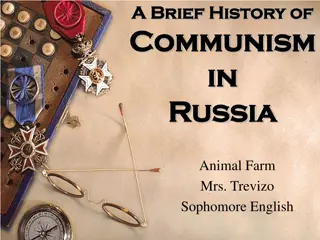The Rise and Rule of Leaders in Russia: Marx, Lenin, and Stalin
The journey of political upheaval in Russia, from the writing of the Communist Manifesto by Marx and Engels to the rule of Lenin and the dictatorship of Stalin, marked by revolution, famines, purges, and the Great Terror.
Download Presentation

Please find below an Image/Link to download the presentation.
The content on the website is provided AS IS for your information and personal use only. It may not be sold, licensed, or shared on other websites without obtaining consent from the author.If you encounter any issues during the download, it is possible that the publisher has removed the file from their server.
You are allowed to download the files provided on this website for personal or commercial use, subject to the condition that they are used lawfully. All files are the property of their respective owners.
The content on the website is provided AS IS for your information and personal use only. It may not be sold, licensed, or shared on other websites without obtaining consent from the author.
E N D
Presentation Transcript
In 1848 the Communist Manifesto was written a political pamphlet created by two philosophers, Marx and Engel, which deeply criticised Capitalism and called for the overthrow of the royal family. Q. What was Marx s theory?
In the lead up to 1917 food shortages and political stress meant that more and more Russians were becoming unhappy with how they were being led especially by their monarchy and the ruling political elite. Q. What happened in the lead up to 1917?
1917 Russian Revolution happens in which the working classes rise up and take down the aristocracy (ruling classes). Q. What was the Russian Revolution?
From 1917 until 1922 Lenin served as Russias leader. In 1922, Russia became the Soviet Union and Lenin continued to lead the Republic until his death in 1924. His body was embalmed and put on public display. Q. What happened between 1917 and 1924?
Stalin became the Chairman of the new Committee in Russia in 1917. He would go on to rule Russia until his death. His time in power was that of a dictator. Q. Who was Stalin and what did he do?
From 1933-39 Russia experienced appalling famines. Much of the country was starving to death. In 1933 alone, a suspected 5, 000, 000 people died. Stalin attempted to cover this up with his talk of Five Year plans in which the nation would persevere through extreme hardship but there would be an endpoint i.e. better farmlands, good townships.
In 1933 The Great Terror also began. Stalin rounded up many political prisoners and purged them. Show trials were put on where people admitted to certain deeds and were executed often they hadn t done anything at all. Q. What was happening in Russia under Stalin s rule?
The NKVD was the body that carried out the countrys police work. They were responsible for at least 2, 700, 000 deaths that they officially recorded. However, the true death toll is much higher than that. Q. Who were the NKVD?
Stalin placed an emphasis on foreign affairs as a leader. He encouraged diplomats from abroad to visit his country and showed them the good that was being done in the Soviet Union. Many nations chose to ignore what they knew was really happening to the people of Russia and continued to trade with Soviet Union and make political alliances. Q. What was Stalin s focus?
File:Leon Trotsky Armored Train 1920.jpg Trotsky was an important sub-leader during Russian Revolution and he held positions within the new leadership. Trotskyism became a major philosophical thought that conflicted with Stalinism. He was also involved in establishing the Trade Unions. Trotsky wanted progress to happen, and he wanted it to happen throughout the world. He was a good speaker and gained a lot of followers. In 1927 Trotsky was expelled from the Central Committee. Q. Who was Trotsky? Q. What did Trotsky do? Q. What happened to him and why?
Molotov was a supporter of Stalin and helped to secure him as leader after Lenin s death, despite other rivals for the post. Stalin discussed a lot of his work openly with Molotov and relied on him to run the propaganda. Q. What did Molotov?


